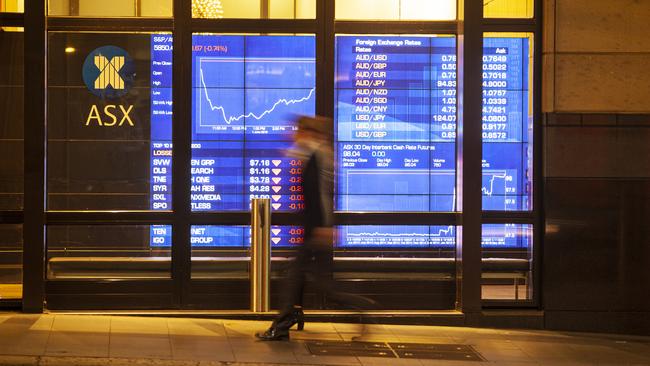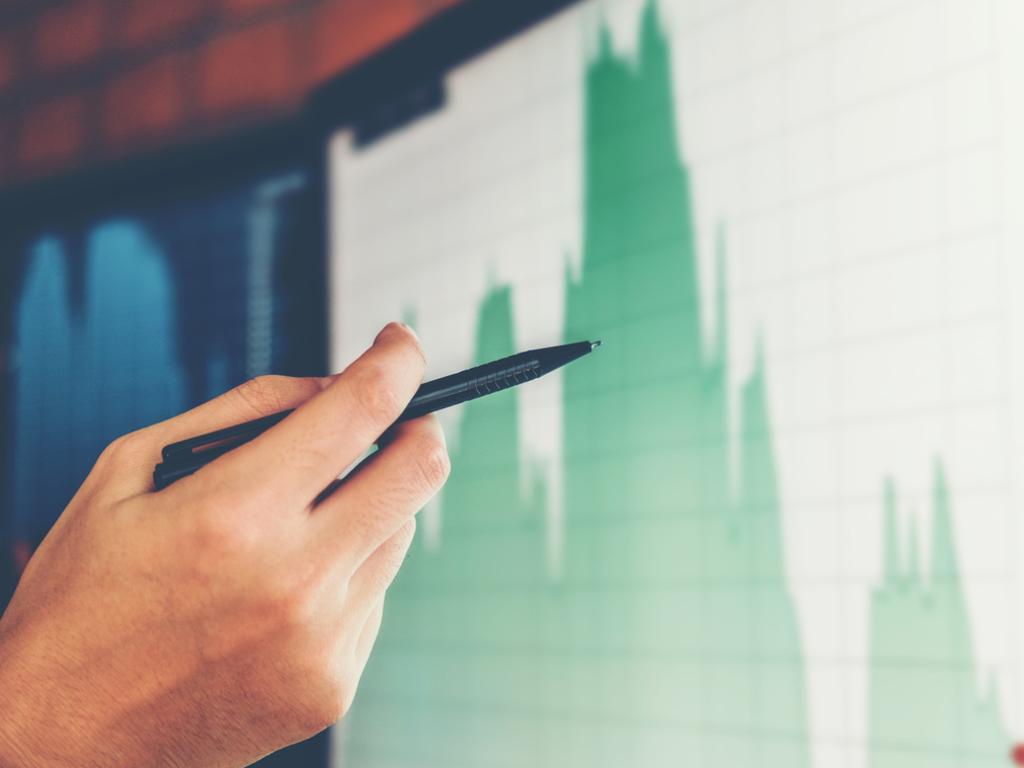Conditions ideal for ‘melt-up’ in world markets
The local sharemarket is hitting record highs again as US-Iran tensions de-escalate.

The local sharemarket is hitting record highs again as US-Iran tensions de-escalate.
A broadbased rise in global markets followed placating comments from US President Donald Trump, lifting the benchmark ASX 200 index 0.8 per cent to a record high close of 6874.2 points.
It came within a few points of the record high of 6893.7 after the S&P 500 hit another record on Wall Street overnight.
With the US showing no appetite for further military action after Iran’s harmless missile attack on US bases, lessening geopolitical risk has reignited the “melt-up” on Wall Street that has been going on for three months amid a resilient US economy and de-escalation of the trade war.
Perhaps some of the fund managers who expected the S&P 500 to retest its late 2018 low last year will finally bite the bullet and buy. No doubt many were underweight all year.
They were largely right about the declining earnings outlook and the fallout from the trade war, but the global economy soon stabilised with no sign of a US recession despite a brief inversion of the yield curve. Moreover, the bears underestimated the central banks response to the risks to growth and the impact of their rate cuts and liquidity on share price multiples.
No doubt some bears are sticking to their guns, with Cantor Fitzgerald chief market strategist Peter Cecchini warning the S&P 500 and 10-year US Treasury yield will drop sharply in 2020.
With the effectiveness of monetary policy fading, no imminent fiscal policy in the US or Europe, “low quality” US job creation and a still-simmering trade dispute, he says a recession in the second half of the year as “a possibility worthy of discussion”.
“Markets are out of rhythm with the fundamentals,” Cecchini writes in his 2020 outlook. “We see no inflection in global growth, and many risk assets are now priced to near-perfection.”
With the S&P 500 surging 29 per cent to 3231 points last year, Cecchini’s year-end target of 2390 proved wide of the mark.
Plain sailing
He maintains that a correction in the US market will occur before earnings growth improves.
A rise to 3300 is “a distinct possibility” amid “fear of missing out”, but with valuations “simply ludicrous”, Cecchini is expecting the S&P 500 to fall almost 12 per cent to 2880 by the end of 2020, making him the most bearish of the strategists surveyed by Bloomberg.
“While our second half view failed to manifest in 2019, we continue to believe that risk assets are vulnerable to the many risks currently being ignored by market participants,” he says.
“Risks of a 2020 US recession are significantly elevated.”

Still, while the sustained rise in gold since Friday suggests Iran risk hasn’t completely gone, the situation has eased enough to allow investors to focus on the economy.
Assuming there’s no further retaliation for the assassination of General Qassem Soleimani by the US, it looks like plain sailing for markets for Friday’s release of US non-farm payrolls data.
Stronger-than-expected ADP employment data may give upside risk to consensus estimates for a 160,000 rise in payrolls and an unemployment rate unchanged at a 50-year low of 3.5 per cent.
It will also allow the market to refocus on easing US-China trade tensions, with the phase one deal due to be signed next Wednesday. That may be complicated by reports that China is picking up soybean cargoes in Brazil, dashing hopes for big US sales immediately after the phase one deal.
Bloomberg reported that private buyers from China have purchased about 10 cargoes from Brazil this week for shipments from January through April, yet China has pledged to buy $40bn a year in US agricultural products which would require big purchases of soybeans.
But for now the conditions look ideal for a further melt-up in developed world markets, even if the local bourse is set to underperform the US again this year amid stretched valuations, with the 12-month forward PE ratio at a record high above 17.5 times.
Potentially helping the short-term outlook for domestic shares are expectations of a February rate cut after severe bushfires and a collapse in the ANZ consumer confidence measure.
Westpac consumer confidence and ABS employment data on January 22-23 will be crucial for RBA bets.
Then the focus will turn to earnings season which carries the risk of a weak corporate outlook.







To join the conversation, please log in. Don't have an account? Register
Join the conversation, you are commenting as Logout